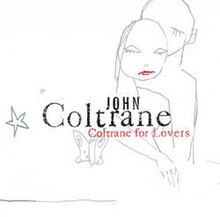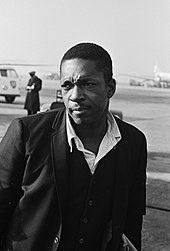
John William Coltrane was an American jazz saxophonist, bandleader and composer. He is among the most influential and acclaimed figures in the history of jazz and 20th-century music.
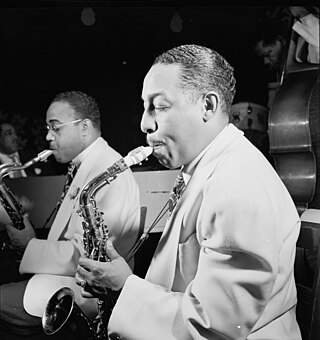
Cornelius "Johnny" Hodges was an American alto saxophonist, best known for solo work with Duke Ellington's big band. He played lead alto in the saxophone section for many years. Hodges was also featured on soprano saxophone, but refused to play soprano after 1946. Along with Benny Carter, Hodges is considered to be one of the definitive alto saxophone players of the big band era.

Coleman Randolph Hawkins, nicknamed "Hawk" and sometimes "Bean", was an American jazz tenor saxophonist. One of the first prominent jazz musicians on his instrument, as Joachim E. Berendt explained: "there were some tenor players before him, but the instrument was not an acknowledged jazz horn". Hawkins biographer John Chilton described the prevalent styles of tenor saxophone solos prior to Hawkins as "mooing" and "rubbery belches." Hawkins cited as influences Happy Caldwell, Stump Evans, and Prince Robinson, although he was the first to tailor his method of improvisation to the saxophone rather than imitate the techniques of the clarinet. Hawkins' virtuosic, arpeggiated approach to improvisation, with his characteristic rich, emotional, and vibrato-laden tonal style, was the main influence on a generation of tenor players that included Chu Berry, Charlie Barnet, Tex Beneke, Ben Webster, Vido Musso, Herschel Evans, Buddy Tate, and Don Byas, and through them the later tenormen, Arnett Cobb, Illinois Jacquet, Flip Phillips, Ike Quebec, Al Sears, Paul Gonsalves, and Lucky Thompson. While Hawkins became known with swing music during the big band era, he had a role in the development of bebop in the 1940s.
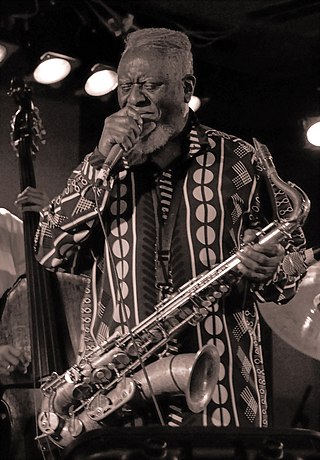
Pharoah Sanders was an American jazz saxophonist. Known for his overblowing, harmonic, and multiphonic techniques on the saxophone, as well as his use of "sheets of sound", Sanders played a prominent role in the development of free jazz and spiritual jazz through his work as a member of John Coltrane's groups in the mid-1960s, and later through his solo work. He released over thirty albums as a leader and collaborated extensively with vocalist Leon Thomas and pianist Alice Coltrane, among many others. Fellow saxophonist Ornette Coleman once described him as "probably the best tenor player in the world".
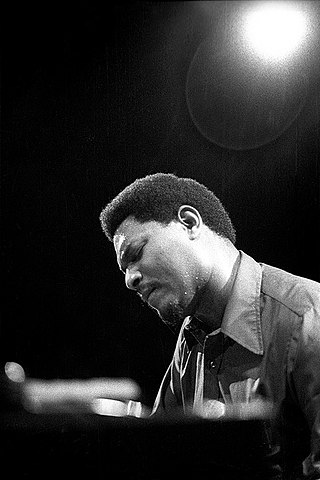
Alfred McCoy Tyner was an American jazz pianist and composer known for his work with the John Coltrane Quartet and his long solo career afterwards. He was an NEA Jazz Master and five-time Grammy award winner. Unlike many of the jazz keyboardists of his generation, Tyner very rarely incorporated electric keyboards or synthesizers into his work. Tyner has been widely imitated, and is one of the most recognizable and influential pianists in jazz history.

James Emory Garrison was an American jazz double bassist. He is best remembered for his association with John Coltrane from 1961 to 1967.

Benjamin Francis Webster was an American jazz tenor saxophonist.

Edward Hammond Boatner Jr., known professionally as Sonny Stitt, was an American jazz saxophonist of the bebop/hard bop idiom. Known for his warm tone, he was one of the best-documented saxophonists of his generation, recording more than 100 albums. He was nicknamed the "Lone Wolf" by jazz critic Dan Morgenstern because of his tendency to rarely work with the same musicians for long despite his relentless touring and devotion to jazz. Stitt was sometimes viewed as a Charlie Parker mimic, especially earlier in his career, but gradually came to develop his own sound and style, particularly when performing on tenor saxophone and even occasionally baritone saxophone.

Impulse! Records is an American jazz record label established by Creed Taylor in 1960. John Coltrane was among Impulse!'s earliest signings. Thanks to consistent sales and positive critiques of his recordings, the label came to be known as "the house that Trane built".
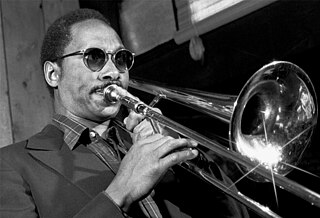
Julian Priester is an American jazz trombonist and occasional euphoniumist. He is sometimes credited "Julian Priester Pepo Mtoto". He has played with Sun Ra, Max Roach, Duke Ellington, John Coltrane, and Herbie Hancock.

Alice Coltrane, also known by her adopted Sanskrit name Turiyasangitananda, was an American jazz musician, composer and swamini.
"In a Sentimental Mood" is a jazz composition by Duke Ellington. He composed the piece in 1935 and recorded it with his orchestra during the same year. Lyrics were written by Manny Kurtz; Ellington's manager Irving Mills gave himself a percentage of the publishing, so the song was credited to all three. Other popular versions in 1935/36 were by Benny Goodman and by Mills Blue Rhythm Band.

Transition is an album of music by jazz saxophonist John Coltrane, recorded in 1965 but released posthumously only in 1970. As its title indicates, Transition was a bridge between classic quartet recordings like A Love Supreme and the more experimental works of Coltrane's last years.

John Maurice Hartman was an American jazz singer who specialized in ballads. He sang and recorded with Earl Hines' and Dizzy Gillespie's big bands and with Erroll Garner. Hartman is best remembered for his collaboration in 1963 with saxophonist John Coltrane, John Coltrane and Johnny Hartman, a landmark album for both him and Coltrane.
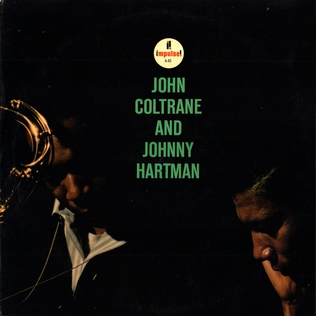
John Coltrane and Johnny Hartman is a studio album by John Coltrane and Johnny Hartman which was released by Impulse! Records in July or August 1963. It was inducted into the Grammy Hall of Fame in 2013.

Coltrane "Live" at the Village Vanguard is a live album by jazz musician John Coltrane, released in February 1962 on Impulse Records. It is the first album to feature the members of the classic quartet of Coltrane with McCoy Tyner, Jimmy Garrison, and Elvin Jones, as well as the first Coltrane live album to be issued. In contrast to his previous album for Impulse!, this one generated much turmoil among both critics and audience alike with its challenging music.

Coltrane is a studio album by jazz saxophonist, bandleader, and composer John Coltrane. It was recorded in April and June 1962, and released in July of that same year by Impulse! Records. At the time, it was overlooked by the music press, but has since come to be regarded as a significant recording in Coltrane's discography. When reissued on CD, it featured a Coltrane composition dedicated to his musical influence "Big Nick" Nicholas that the saxophonist recorded for his Duke Ellington collaboration Duke Ellington & John Coltrane (1963). The composition "Tunji" was written by Coltrane in dedication to the Nigerian drummer Babatunde Olatunji.

First Meditations (for quartet) is an album by John Coltrane recorded on September 2, 1965 and posthumously released in 1977. It is a quartet version of a suite Coltrane would record as Meditations two months later with an expanded group. Along with Sun Ship, recorded a week earlier, First Meditations represents the final recordings of Coltrane's classic quartet featuring pianist McCoy Tyner, bassist Jimmy Garrison, and drummer Elvin Jones.

The Classic Quartet – The Complete Impulse! Recordings is a 1998 box set by jazz musician John Coltrane.
This is the discography of recordings by Duke Ellington, including those nominally led by his sidemen, and his later collaborations with musicians with whom Ellington had generally not previously recorded.
